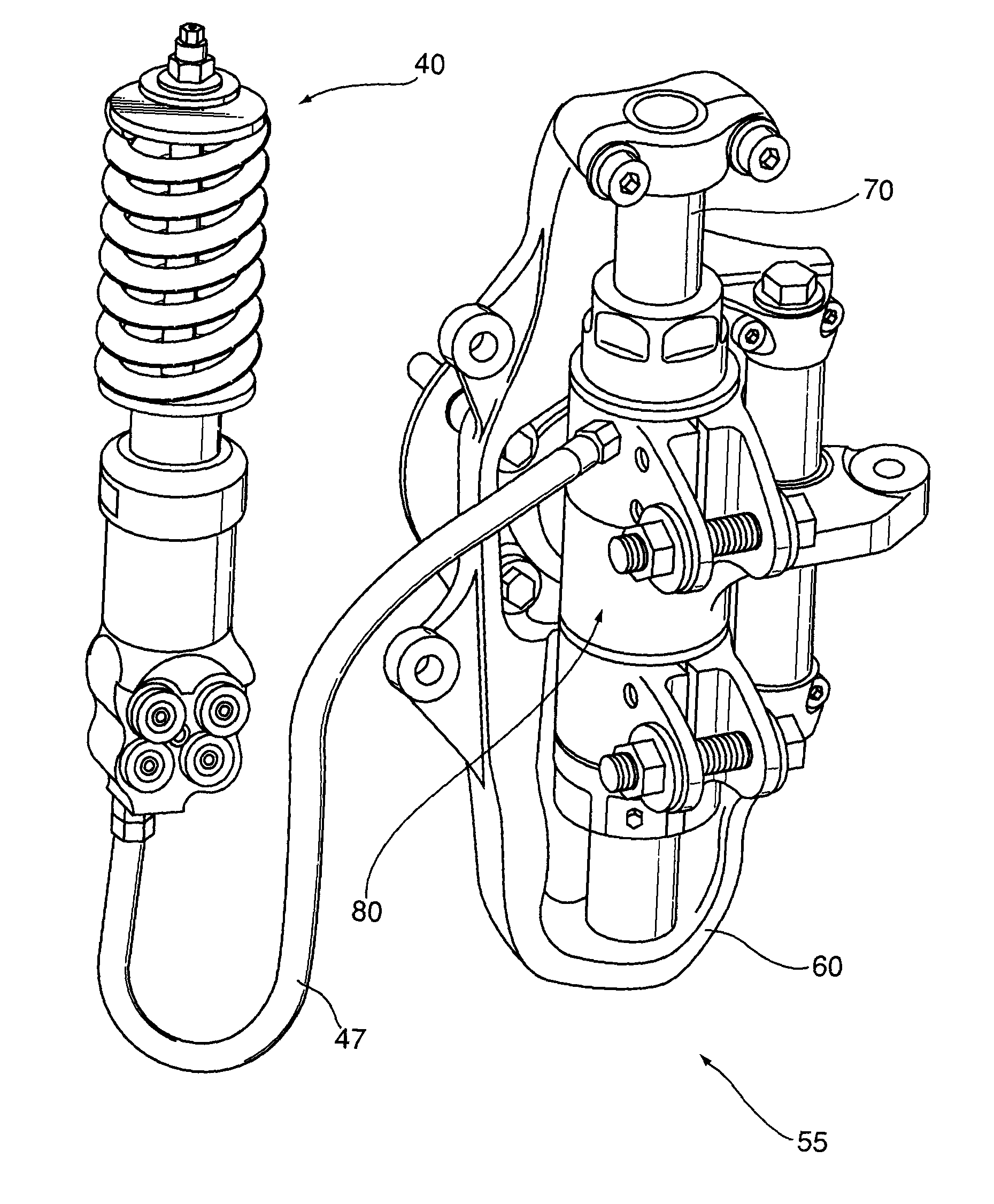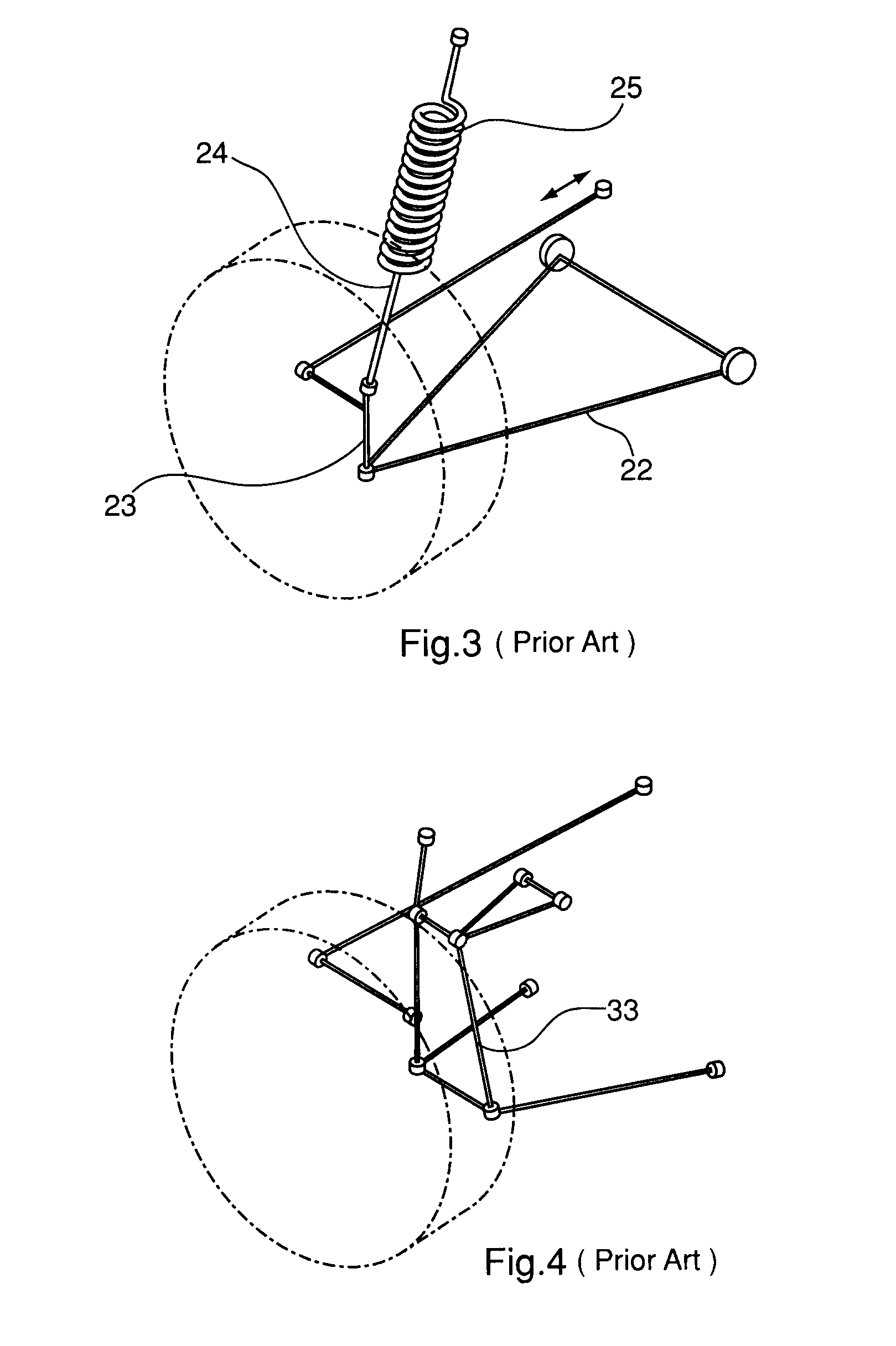In-wheel suspension system with remote spring and damper means
a suspension system and remote spring technology, applied in the direction of suspensions, steering parts, vehicle components, etc., can solve the problems of limited overall system motion, significant complexity, and numerous inherent limitations of conventional articulating linkages described above, so as to overcome the disadvantages of geometry and friction, and eliminate articulating linkages
- Summary
- Abstract
- Description
- Claims
- Application Information
AI Technical Summary
Benefits of technology
Problems solved by technology
Method used
Image
Examples
Embodiment Construction
[0037]Referring to FIG. 5, a suspension system (55) is substantially constructed from an upright (60), a strut shaft (70), a main housing (80) and a remote suspension module (40). Referring to FIGS. 6 and 8, the upright (60) is configured with a spindle (61), a mounting flange (62) for a brake caliper (105) and a fastening means (63). The spindle (61) is configured to carry a wheel bearing assembly (64) which is adapted for rotatable mounting of a wheel hub (65). The wheel hub (65) additionally includes a detachable connection (66) for a wheel (100) and tire (101) assembly. Referring to FIGS. 7 and 10, the main housing (80) is substantially constructed from a pressure tube (86) a pair of removable seal caps (82) and a mounting arrangement (81) for attachment to a main vehicle structure. The seal caps (82) contain a sealing system (83), and a threaded retention aspect (85) configured to interact with a matching pressure tube thread (87), and are adapted to retain a bearing arrangemen...
PUM
 Login to View More
Login to View More Abstract
Description
Claims
Application Information
 Login to View More
Login to View More - R&D
- Intellectual Property
- Life Sciences
- Materials
- Tech Scout
- Unparalleled Data Quality
- Higher Quality Content
- 60% Fewer Hallucinations
Browse by: Latest US Patents, China's latest patents, Technical Efficacy Thesaurus, Application Domain, Technology Topic, Popular Technical Reports.
© 2025 PatSnap. All rights reserved.Legal|Privacy policy|Modern Slavery Act Transparency Statement|Sitemap|About US| Contact US: help@patsnap.com



